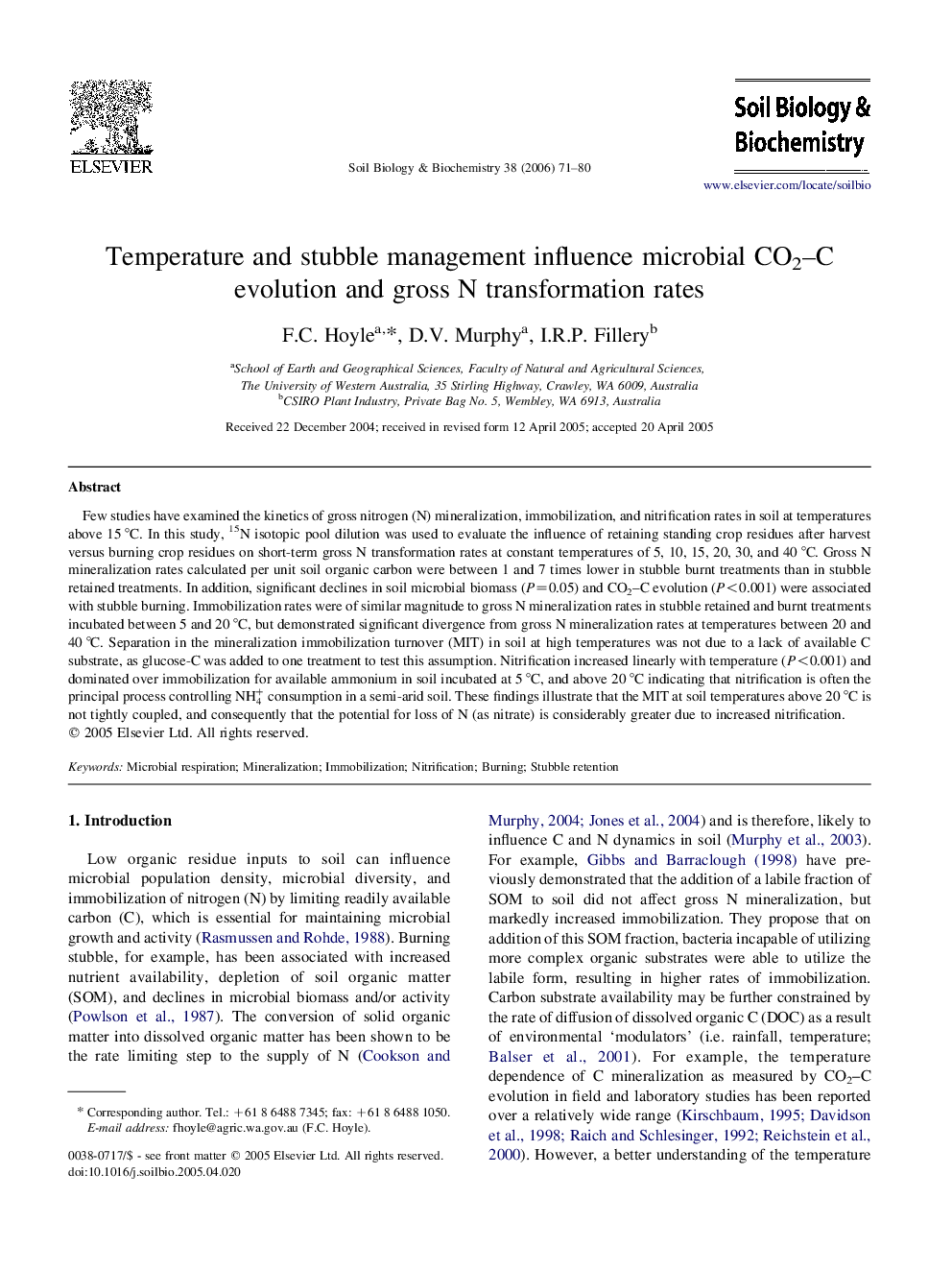| کد مقاله | کد نشریه | سال انتشار | مقاله انگلیسی | نسخه تمام متن |
|---|---|---|---|---|
| 2026750 | 1070041 | 2006 | 10 صفحه PDF | دانلود رایگان |

Few studies have examined the kinetics of gross nitrogen (N) mineralization, immobilization, and nitrification rates in soil at temperatures above 15 °C. In this study, 15N isotopic pool dilution was used to evaluate the influence of retaining standing crop residues after harvest versus burning crop residues on short-term gross N transformation rates at constant temperatures of 5, 10, 15, 20, 30, and 40 °C. Gross N mineralization rates calculated per unit soil organic carbon were between 1 and 7 times lower in stubble burnt treatments than in stubble retained treatments. In addition, significant declines in soil microbial biomass (P=0.05) and CO2–C evolution (P<0.001) were associated with stubble burning. Immobilization rates were of similar magnitude to gross N mineralization rates in stubble retained and burnt treatments incubated between 5 and 20 °C, but demonstrated significant divergence from gross N mineralization rates at temperatures between 20 and 40 °C. Separation in the mineralization immobilization turnover (MIT) in soil at high temperatures was not due to a lack of available C substrate, as glucose-C was added to one treatment to test this assumption. Nitrification increased linearly with temperature (P<0.001) and dominated over immobilization for available ammonium in soil incubated at 5 °C, and above 20 °C indicating that nitrification is often the principal process controlling NH4+ consumption in a semi-arid soil. These findings illustrate that the MIT at soil temperatures above 20 °C is not tightly coupled, and consequently that the potential for loss of N (as nitrate) is considerably greater due to increased nitrification.
Journal: Soil Biology and Biochemistry - Volume 38, Issue 1, January 2006, Pages 71–80